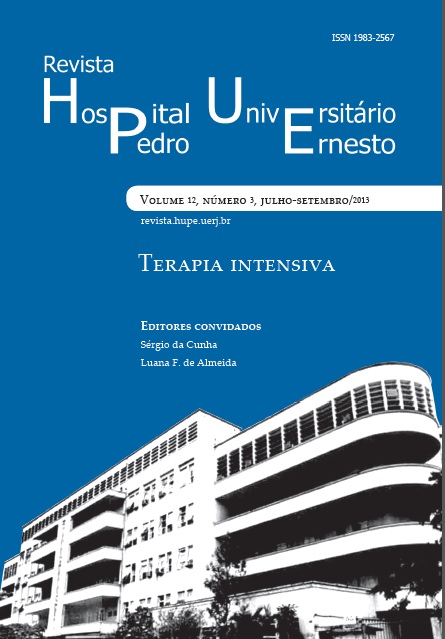Staphiloccocus aureus infections: change in epidemiology at Pedro Ernesto University Hospital
DOI:
https://doi.org/10.12957/rhupe.2013.7529Abstract
The healthcare-associated infections (HAIs) represent an increasing problem due to the consequences on patient mortality and the high associated-costs of the medical assistance. Currently, Staphylococcus aureus is considered one of the most important microorganisms in the context of worldwide HAIs. The methicillin resistant Staphylococcus aureus (MRSA) was first described as a pathogen associated with infections related to health care, but a clone of MRSA, the community-associated (CA) CAMRSA emerged in the community leading cause serious infections such as skin and soft tissues infections, necrotizing fasciitis, intra-abdominal abscesses, bloodstream infection, sepsis, septic arthritis, osteomyelitis, endocarditis, meningitis, infections related to intravascular catheters or bladder catheters and pneumonia (community-acquired and healthcare-associated, with or without mechanical ventilation) and is currently prevalent in many Brazilian hospitals. The aim of this article was to describe issues of the epidemiology of infections due to CA-MRSA in the Pedro Ernesto University Hospital of Rio de Janeiro City, focusing in risk factors related with infections due to this pathogen. For this purpose was done a retrospective study of the infections/colonization from February 2005 to July 2011. In the temporal analysis on presentation of MRSA phenotypes were observed a decreasing trend of presence of multidrug-resistant (MDR) MRSA clones (HA-MRSA like) (p<0.05) and aslightly increase in the non-MDR MRSA (CAMRSA like), but without reaching statistic significance (p = 0.06). There was no association between a specific S. aureus phenotype and the fatal outcomes in infectious episodes. Aging (above 70 years-old) (OR: 2.46, IC95%: 0.99 -6.11), healthcare-associated pneumonia (OR: 4.94, IC95%: 1.65 -14.8), chronic obstructive pulmonary disease (OR: 6.09, IC95% 1.16 –31.98) and leukemia (OR: 8.2, IC95%: 1.25 –54.7) were risk factors associated with mortality in this patient settings.Downloads
Published
2013-09-30
Issue
Section
Artigos


